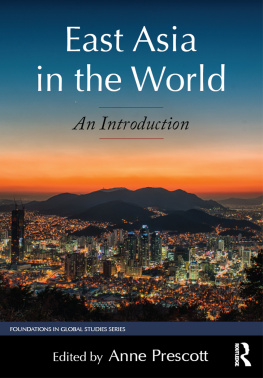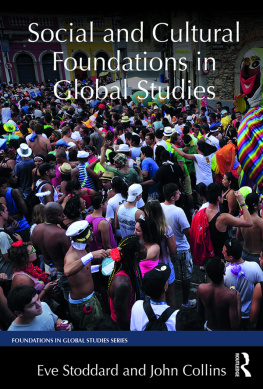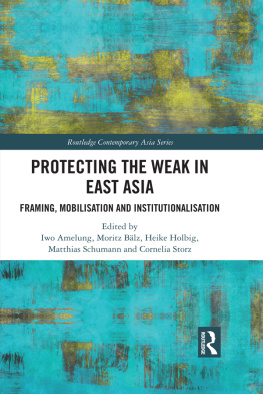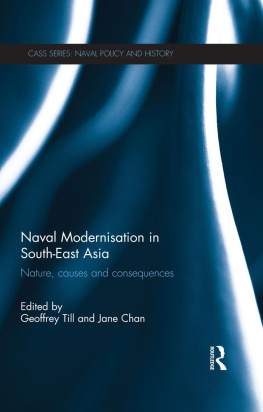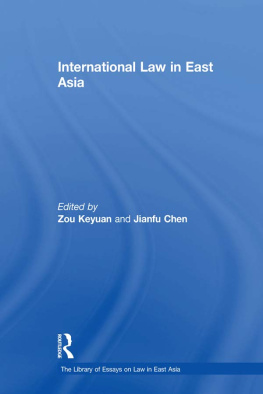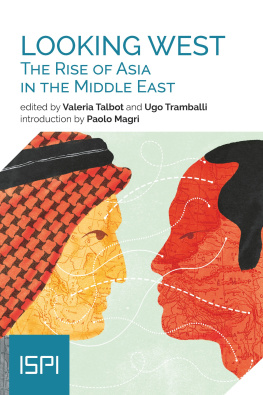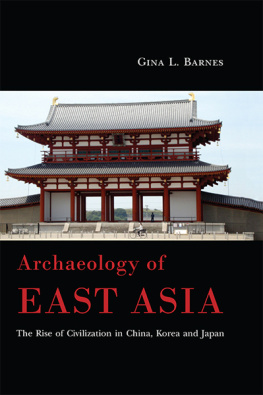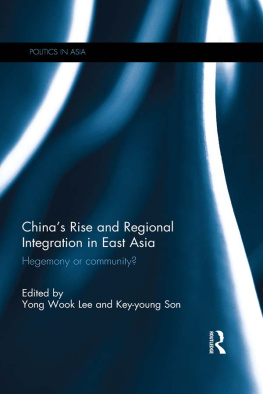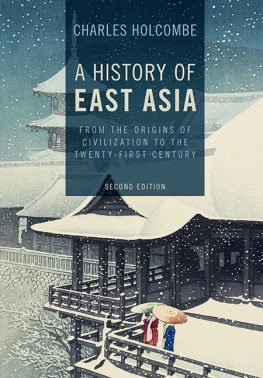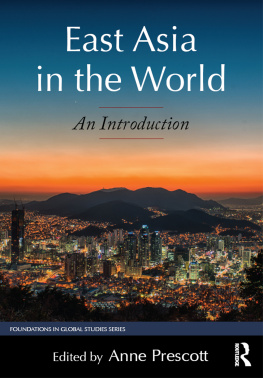

East Asia in the World

From the Foundations in Global Studies series, this text offers students a fresh, comprehensive, multidisciplinary entry point to East Asia, with an emphasis on the globalizing processes the region is undergoing. After a brief introduction to the study of East Asia, the early chapters of the book survey the essentials of East Asian history and offer an overview of the regions languages, economic development, and global connections. Students are guided through the material with relevant maps, resource boxes, and text boxes that support further independent exploration of the topics at hand.
The second half of the book presents an interdisciplinary portrait of the region through a set of case studies that explore key aspects of the cultural, economic, and political life in specific countries, sometimes holding up a mirror to the region as a whole. Readers will come away from this book with an understanding of current issues that have particular relevance in East Asia as we know it today and of the larger globalizing forces shaping the region and beyond.
Anne Prescott is the director of the Five College Center for East Asian Studies in Massachusetts and a national director for the National Consortium for Teaching about Asia, a leading provider of professional development training on East Asia. Trained as an ethnomusicologist specializing in traditional Japanese music, she spent eight years in Japan. She has been an administrator at area studies centers since 2002.
Foundations in Global Studies
Series Editor: Valerie Tomaselli, MTM Publishing
The Regional Landscape
East Asia in the World: An Introduction
Editor: Anne Prescott, Five College Center for East Asian Studies at Smith College
The Middle East in the World: An Introduction
Editor: Lucia Volk, San Francisco State University
South Asia in the World: An Introduction
Editor: Susan Snow Wadley, Syracuse University

East Asia in the World

An Introduction
Edited by Anne Prescott

First published 2015
by Routledge
711 Third Avenue, New York, NY 10017
and by Routledge
2 Park Square, Milton Park, Abingdon, Oxon, OX14 4RN
Routledge is an imprint of the Taylor & Francis Group, an informa business
2015 selection and editorial material, Anne Prescott; individual chapters, the contributors
The right of Anne Prescott to be identified as author of the editorial material, and of the individual authors as authors of their contributions, has been asserted by them in accordance with sections 77 and 78 of the Copyright, Designs and Patents Act 1988.
All rights reserved. No part of this book may be reprinted or reproduced or utilised in any form or by any electronic, mechanical, or other means, now known or hereafter invented, including photocopying and recording, or in any information storage or retrieval system, without permission in writing from the publishers.
Trademark notice: Product or corporate names may be trademarks or registered trademarks, and are used only for identification and explanation without intent to infringe.
Library of Congress Cataloging in Publication Data
East Asia in the world : an introduction / edited by Anne Prescott.
pages cm. (Foundations in global studies)
Includes index.
1. East Asia. 2. East AsiaCivilization. 3. East AsiaSocial conditions. 4. GlobalizationEast Asia. I. Prescott, Anne (Director), editor.
DS504.5.E263 2015
950dc23
2014043225
ISBN: 978-0-7656-4321-6 (hbk)
ISBN: 978-0-7656-4322-3 (pbk)
ISBN: 978-1-315-71734-0 (ebk)
Typeset in Times New Roman
by Swales & Willis Ltd, Exeter, Devon, UK

Contents

Anne Prescott
Anne Prescott
Jerry P. Dennerline
Anne Prescott
Thomas Gottschang
Anne Prescott
Anne Prescott
Anne Prescott
Beth E. Notar
Jina E. Kim
Joshua Hotaka Roth and Mariko Sikama
Jeffrey L. Richey
Jacques Fuqua
Junko Oba
Maris Gillette
Bruce Baird
Vanessa L. Fong


East Asia in the World: An Introductionthe third book in M.E. Sharpes Foundations in Global Studies: The Regional Landscape seriesprovides a fresh, systematic, and comprehensive overview of East Asia. Including coverage of China (including Taiwan), North Korea, South Korea, and Japan, the East Asia considered here is cogent and diverse at the same time; the vast areas under this formulation share patterns of history and culture, but also diverge in dramatic ways across the broad reach of its geography. For instance, these East Asian countries are not only tied together by their physical proximity, but also by two prominent cultural bonds that originated in China: the first being Confucianism and the second being the use of Chinese characters in their writing systems. These regions, often considered under a separate rubric in the traditional area studies approach, are considered critical here in understanding how East Asia developed across the centuries and how it is defined today. And while the focus is on the more typical core East Asian countries rather than those in Southeast Asia, the globalized complexion of East Asia is made clear in our broader reach.
The exploration of globalizing processes is indeed the focus of East Asia in the World, and the series as a whole. As we examine a host of global patterns that are reflected in and that shape the regionmoney flows, diasporic movements, hybridity in language, political movements affected by worldwide media and movement of ideasthe in the World part of the title gets a full hearing. Indeed, the variations in this wide regions social, cultural, economic, and political life are explored within the context of the globalizing forces affecting all regions of the world.
In a simple strategy that all books in the series employ, this volume begins with an overview and foundational material (including chapters on history, language, and economic development), moves to a discussion of globalization, and then focuses the investigation more specifically through the use of case studies. The set of case studies exposes readers to various disciplinary lenses that bring the region to life through subjects of high interest and importance to todays readers. Among others, these topics include the new car culture in China; the use of the radio as new media and technology in colonial Korea; the effect that Japans March 2011 Triple Disaster had on minorities; Confucianism in modern East Asia; and the growing effect of Chinas one-child policy on the countrys urban daughters.
Next page
